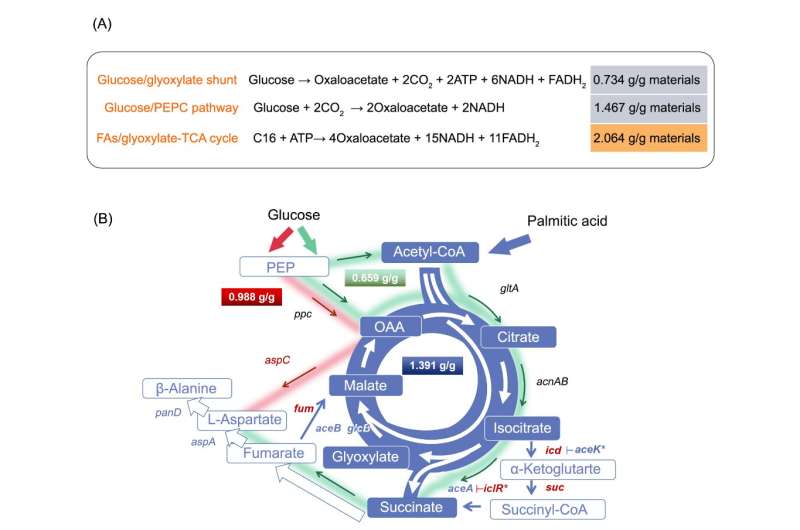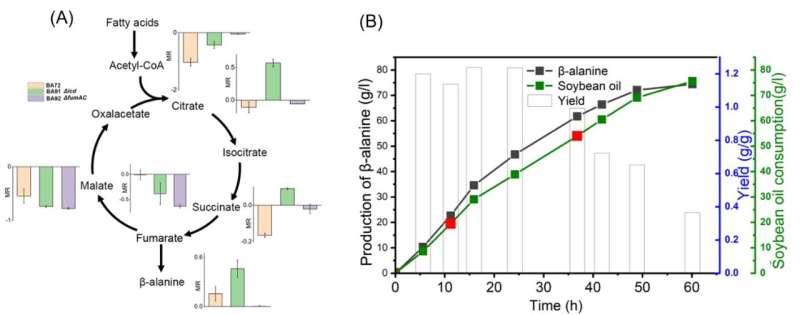Fatty acid feedstocks enable a highly efficient glyoxylate‐TCA cycle for high‐yield production of β‐alanine

This study is led by Dr. Yong Tao (Institute of Microbiology, Chinese Academy of Sciences), Dr. Weifeng Liu (Institute of Microbiology, Chinese Academy of Sciences) and Dr. Bo Liu (Microcyto Co. Ltd.,). Fatty acids are promising alternative feedstocks to glucose and can be easily obtained from various sources, including waste oil, crude oil, and oil by‐products. In recent years, Prof. Yong Tao ‘s group has been committed to develop economically and ecologically competitive bioproduction processes using alternative biomass. They mainly focused on fatty acid-based biomass resources.
Both Dr. Weifeng Liu and Bo Liu are the key members of this research team. “Fatty acids have a higher degree of reduction and carbon content per mass compared to glucose. Fatty acid catabolism can generate abundant acetyl‐CoA serving as the precursor of many important chemicals. Meanwhile, their catabolism allows generation of more reducing equivalents required for biosynthesis and can produce chemicals with higher yield,” Weifeng says.
β‐Alanine is an important nonprotein amino acid derived from TCA cycle intermediates. It can be used as precursors for producing pantothenic acid, acrylamide, and acrylonitrile, which are widely applied in the production of food additives, pharmaceuticals, and bulk chemicals. β‐Alanine could be produced from fatty acids with a theoretical yield of 1.391 g/g raw materials (palmitic acid), which is much higher than any route from glucose.
In this work, they found that fatty acid feedstocks could enable high‐yield production of β‐alanine, while maintaining an efficient and balanced metabolic flux of the glyoxylate‐TCA cycle, which is favorable for both product synthesis and cell growth.

Eventually, an efficient microbial cell factory for the sustainable production of β‐alanine from fatty acid feedstocks was developed. “The production metrics are the highest reported so far. We anticipate that the principles elucidated here would provide insights into developing novel bioproduction routes in the future,” Weifeng says.
The research was published in mLife.
Methanol biotransformation enables efficient production of fatty acid from yeast
Yingchun Miao et al, Fatty acid feedstocks enable a highly efficient glyoxylate‐TCA cycle for high‐yield production of β‐alanine, mLife (2022). DOI: 10.1002/mlf2.12006
Provided by
Beijing Zhongke Journal Publising
Citation:
Fatty acid feedstocks enable a highly efficient glyoxylate‐TCA cycle for high‐yield production of β‐alanine (2022, September 1)
retrieved 1 September 2022
from https://phys.org/news/2022-09-fatty-acid-feedstocks-enable-highly.html
This document is subject to copyright. Apart from any fair dealing for the purpose of private study or research, no
part may be reproduced without the written permission. The content is provided for information purposes only.
For all the latest Science News Click Here
For the latest news and updates, follow us on Google News.

